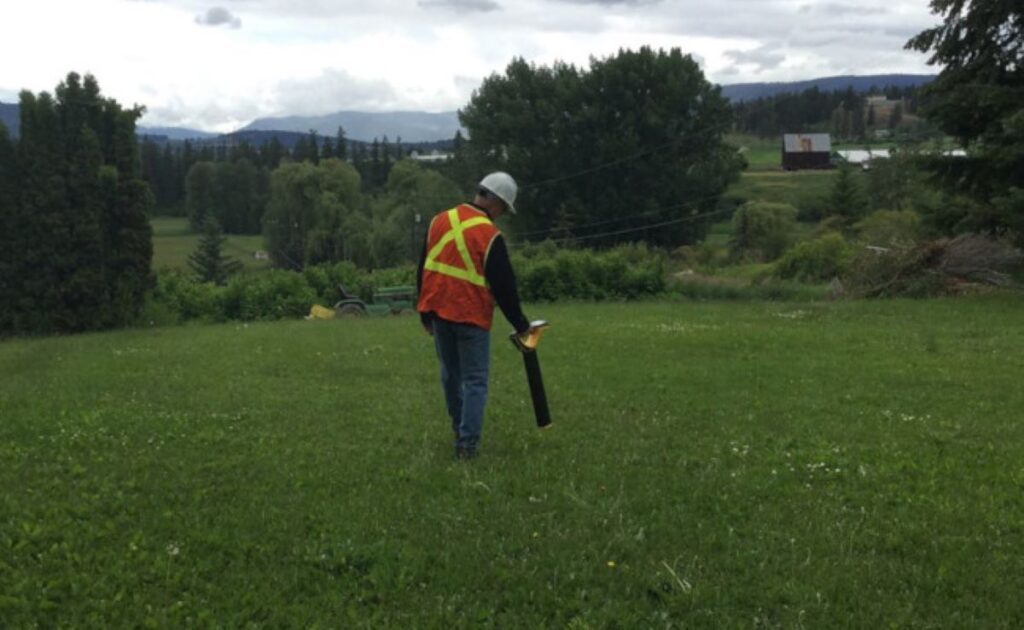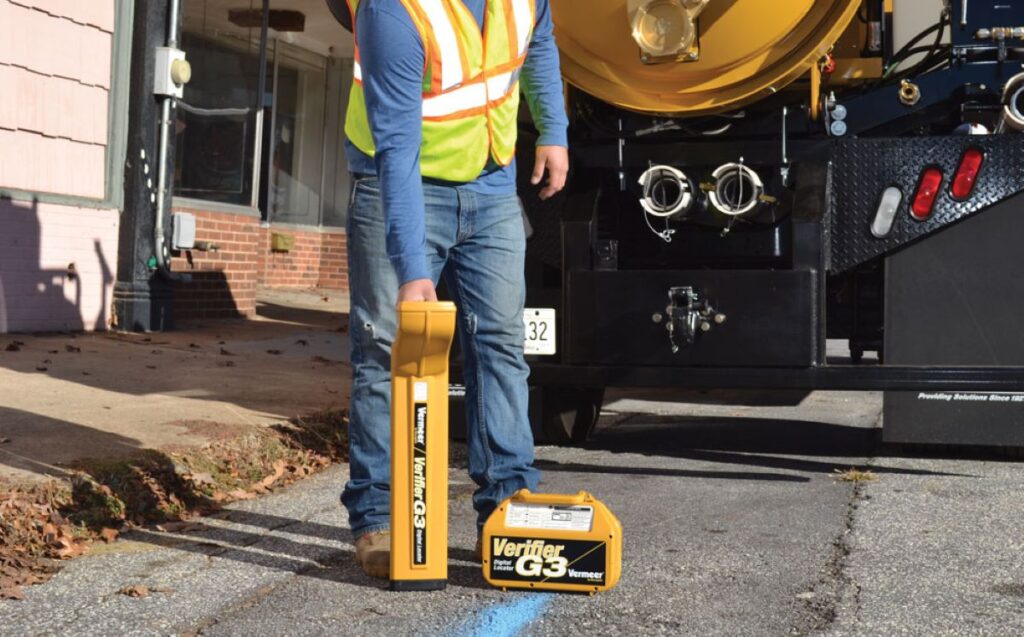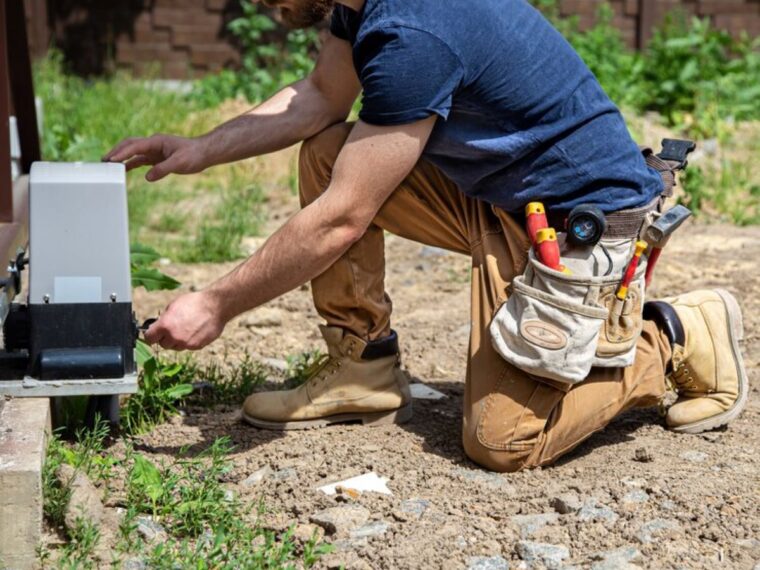Underground utility locating services are crucial in today’s construction and development projects. These specialised services use advanced technology and expertise to find, map, and mark the exact locations of buried infrastructure such as:
- Power lines and electrical cables
- Gas and water pipes
- Telecommunications networks
- Sewage systems
- Fibre optic cables
The main goal of these services goes beyond just finding utilities – they create detailed records of underground assets, making it possible to carry out projects safely and efficiently. This organised way of mapping infrastructure helps avoid expensive accidents, delays, and dangers.
The Risks of Ignoring Utility Location Services
Construction and digging projects face significant dangers when they go ahead without proper utility location services. Just one strike to an underground power line or gas pipe can lead to:
- Safety Hazards: Risk of electrocution or gas explosions
- Service Disruptions: Impact on local communities
- Financial Losses: Repair costs and project delays
- Legal Consequences: Potential litigation and penalties
The Importance of Professional Utility Locating Services
Professional underground utility locating services are a vital tool for managing risks, protecting both lives and project investments. By providing precise information about subsurface infrastructure, these services help make informed decisions throughout the construction process, from initial planning to project completion.
The use of utility locating services has become standard practice in responsible construction management, showing a commitment across the industry to safety, efficiency, and protecting infrastructure.
Understanding Underground Utilities
Construction sites have complex networks of essential infrastructure beneath the surface. These hidden utilities are crucial for the functioning of modern buildings and communities:
Common Underground Utilities
- Electrical Power Lines: High and low voltage cables powering buildings and street lighting
- Natural Gas Pipelines: Distribution networks for residential and commercial heating
- Water Infrastructure: Fresh water supply lines and stormwater drainage systems
- Telecommunications: Fibre optic cables and copper lines for internet and phone services
- Sewerage Systems: Waste management pipes and processing connections
Metallic vs Non-Metallic Utilities
Metallic Utilities:
- Steel gas pipes
- Copper electrical cables
- Cast iron water mains
- Metal-sheathed telecommunications cables
Non-Metallic Utilities:
- PVC water pipes
- Concrete storm drains
- Plastic gas lines
- Fibre optic cables
- Clay sewer pipes
The material composition of these utilities directly impacts their detection methods. Metallic utilities create electromagnetic fields, making them easier to locate using traditional equipment. Non-metallic utilities require advanced technologies such as ground-penetrating radar for accurate identification and mapping.
Each utility type requires specific handling protocols and safety considerations during excavation work. The depth, material, and function of these services influence the approach needed for safe and effective construction activities.
The Role of Underground Utility Locating Services
Professional utility locating services play a critical role in safeguarding infrastructure projects through precise detection and mapping of subsurface utilities. These specialised providers employ advanced technologies and methodologies to deliver comprehensive site investigation services.
A professional utility locator’s scope of work includes:
- Site Assessment: Thorough evaluation of existing utility records and site conditions
- Detection Planning: Strategic approach based on utility types and site characteristics
- Field Investigation: Implementation of various detection methods and technologies
- Data Collection: Systematic gathering of utility location information
- Documentation: Detailed mapping and reporting of findings
The mapping process creates an accurate representation of underground infrastructure through:
- Depth measurements of identified utilities
- Horizontal positioning relative to surface features
- Utility type classification and condition assessment
- Digital documentation for future reference
Professional locating services contribute significant value through:
- Risk mitigation during excavation, as outlined in this white paper on reducing damage to underground utility infrastructure
- Accurate project planning and design
- Cost-effective construction scheduling
- Prevention of service interruptions
- Enhanced workplace safety
Qualified utility locators bring expertise in interpreting complex underground networks and understanding regional infrastructure patterns. This specialised knowledge enables precise identification of utility conflicts and potential hazards before construction begins.
The integration of professional locating services into project planning creates a solid foundation for safe and efficient execution of construction activities.
Technologies Used in Utility Locating
Modern utility locating services employ sophisticated technologies to ensure accurate detection and mapping of underground infrastructure. Two primary technologies stand at the forefront of this field:
1. Electromagnetic Detection Systems
- Transmits electromagnetic signals through metallic utilities
- Detects utilities such as power cables, metal pipes, and telecommunications lines
- Provides precise depth measurements and utility positioning
- Ideal for tracing continuous metallic paths underground
2. Ground Penetrating Radar (GPR)
- Uses high-frequency radio waves to create subsurface images
- Identifies non-metallic utilities including:
- PVC pipes
- Concrete structures
- Fibre optic cables
- Plastic water mains
- Creates detailed cross-sectional views of underground structures
- Effective in various soil conditions
These complementary technologies work together to create comprehensive underground utility maps. While electromagnetic detection excels at locating metallic objects, GPR technology fills the crucial gap in identifying non-metallic infrastructure. The combination of both methods provides surveyors with powerful tools to deliver accurate, reliable results for construction and excavation projects.
Professional utility locators maintain calibrated equipment and stay updated with the latest technological advancements to ensure optimal performance and accuracy in their detection methods.

Regulatory Framework and Safety Protocols in Excavation Projects
Safety regulations and compliance protocols are the foundation of excavation projects throughout Australia. The Dial Before You Dig (DBYD) service is a mandatory first step in any excavation work. It operates as a free national referral service designed to prevent damage to underground infrastructure.
Essential Compliance Requirements:
- Obtaining DBYD reports prior to any ground penetration
- Securing necessary permits from local authorities
- Implementing appropriate safety barriers and signage
- Maintaining detailed documentation of utility locations
- Following prescribed safe digging practices
Legal Obligations for Excavation Work
The Work Health and Safety (WHS) regulations set specific requirements for excavation projects:
- Site Assessment: Comprehensive evaluation of ground conditions
- Risk Management: Detailed plans for identifying and mitigating potential hazards
- Emergency Procedures: Established protocols for utility strike incidents
- Worker Qualifications: Verified competency of personnel involved
The DBYD service connects project managers with utility owners, providing crucial information about underground assets within 48 hours. This information helps create accurate utility maps and determines appropriate excavation methods.
Failure to comply with these regulations can lead to:
- Substantial financial penalties
- Project delays
- Legal prosecution
- Licence suspension
- Insurance complications
Professional utility locating services are essential in ensuring compliance with these regulatory requirements while upholding the highest safety standards throughout excavation projects.
Benefits of Engaging Professional Utility Locating Services
Professional utility locating services deliver critical risk mitigation strategies that safeguard construction projects from potentially catastrophic incidents. These specialised services identify underground assets with precision, preventing accidental strikes that could result in:
- Gas line ruptures leading to dangerous leaks and explosions
- Electric cable damage causing power outages and electrocution risks
- Water main breaks resulting in flooding and property damage
- Telecommunications cable cuts disrupting essential services
The financial implications of utility strikes extend far beyond repair costs:
Direct Financial Impacts:
- Emergency response expenses
- Repair and replacement costs
- Property damage compensation
- Legal fees and penalties
- Insurance premium increases
Indirect Project Costs:
- Work stoppages and schedule delays
- Labour stand-down periods
- Equipment idle time
- Contract penalties for missed deadlines
- Reputation damage
Professional locating services provide accurate subsurface mapping that enables informed decision-making during project planning phases. This proactive approach allows for:
- Strategic excavation route planning
- Efficient resource allocation
- Realistic project timelines
- Reduced insurance premiums
- Enhanced workplace safety compliance
The investment in professional utility location services represents a fraction of potential damage costs, making it an essential component of responsible project management and risk mitigation strategy.
Case Studies: Real-World Applications of Utility Locating Services
Recent telecommunications infrastructure projects demonstrate the critical role of utility locating services in protecting assets and ensuring project success.
1. Telstra Network Expansion Project
A major Telstra network expansion required precise utility mapping across multiple urban sites. Professional locating services identified:
- 3 previously unmapped high-voltage power lines
- Legacy telecommunications infrastructure
- Critical water mains running parallel to proposed cable routes
This detection enabled project engineers to modify installation paths, preventing potential service disruptions and saving an estimated $200,000 in potential repair costs.
2. NBN Rollout Case Study
During NBN deployment in a densely populated NSW suburb, utility locating services revealed:
- Complex underground utility networks at proposed connection points
- Heritage infrastructure requiring special handling protocols
- Optimal pathways for new fibre optic cable installation
3. School Infrastructure NSW Project
A state government educational facility upgrade highlighted the value of comprehensive utility detection:
- Located unmarked electrical conduits near proposed building foundations
- Identified abandoned services requiring removal
- Mapped safe zones for heavy machinery operation
These real-world applications showcase how professional utility locating services protect critical infrastructure while enabling efficient project completion. The expertise demonstrated in these cases spans both private sector telecommunications and public infrastructure developments.

Selecting a Reliable Utility Locating Provider in NSW and QLD Regions
Choosing the right utility locating service requires careful consideration of several key factors. A reliable provider should demonstrate:
Essential Provider Qualities:
- Prompt response times to service requests
- Clear communication and professional conduct
- Transparent pricing structures
- Comprehensive insurance coverage
- Current industry certifications
- Proven track record of successful projects
Local market knowledge, which is a critical differentiator when selecting a utility locating service in NSW and QLD, can greatly enhance the accuracy and efficiency of service delivery. Providers familiar with regional infrastructure patterns, soil conditions, and local regulations deliver more accurate results and efficient service. This local knowledge helps in understanding the unique challenges and requirements of each project.
Value Indicators:
- Access to modern detection equipment
- Detailed documentation and reporting
- Flexible scheduling options
- Competitive rates without compromising quality
- Emergency service availability
- Strong relationships with local authorities
The provider’s experience with specific utility types common to NSW and QLD regions plays a vital role in service delivery. Teams well-versed in local telecommunications infrastructure, water systems, and power networks bring invaluable expertise to each project.
Service Quality Markers:
- Detailed pre-service consultations
- Comprehensive site assessment procedures
- Regular equipment calibration and maintenance
- Ongoing staff training programmes
- Digital mapping capabilities, including advanced digital mapping techniques
- Post-service support and documentation
See Also : Brisbane Registered Surveyors and Why Credentials Matter
Conclusion
Professional underground utility locating services are essential for responsible construction and excavation practices. They provide crucial protection for infrastructure assets and help avoid expensive delays and legal issues.
By implementing thorough utility detection protocols, multiple layers of protection are established:
- Risk Mitigation: Preventing utility strikes and related dangers
- Legal Compliance: Following regulatory requirements and safety standards
- Asset Protection: Preserving important infrastructure networks
- Project Efficiency: Reducing delays and unexpected costs
Investing in professional utility locating services is a strategic decision that goes beyond immediate project needs. It shows a commitment to safe excavation practices, preserving infrastructure, and managing projects responsibly.
A proactive approach to underground utility detection, combined with expert knowledge and advanced technology, lays the groundwork for successful project outcomes. This comprehensive strategy ensures that protecting the project and community safety remain top priorities in every excavation effort.

